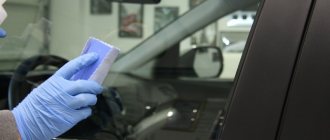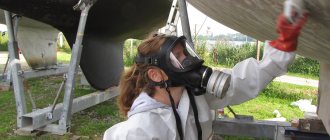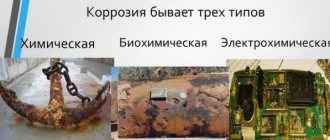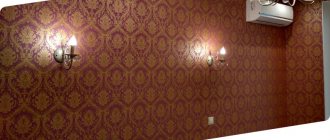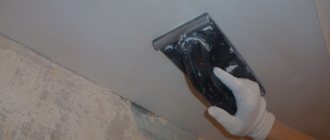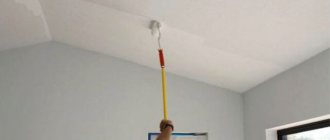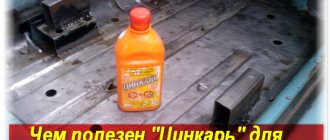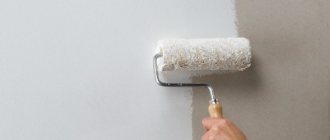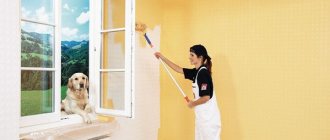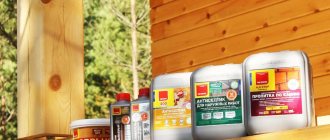Painting of metal is preceded by pre-treatment. While getting rid of rust is somewhat understandable, degreasing is often approached with disdain, using products that were outdated decades ago. Without the degreasing procedure, the point of painting itself is missed - creating a durable and attractive surface coating.
Is it possible to degrease metal with gasoline before painting? If you strive to approach the matter as efficiently as possible, then the answer is not worth it. In this article we will look into the pitfalls of final preparation of metal for painting.
What means exist
Often, to combat the greasy film that is on the body, car enthusiasts use lint-free wipes treated with some kind of solvent in the old fashioned way. Experts do not recommend performing this procedure in this way. This option is suitable only when it is necessary to process only a small area. If you look at the range of preparations for preparatory work before painting that are produced today, you can highlight several products that degrease metal surfaces. These are various solvents and substances of organic origin, emulsions, as well as special solutions that contain synthetic detergent additives.
Should I use kerosene?
Degreasing the surface is a simple process that can be done at home. The main thing is to choose the right product. Some professional wash stations use kerosene, as they use special equipment to process the body. This allows you to completely remove the substance from the surface without leaving its odor. If car degreasing is carried out in a garage, then for these purposes it is recommended to use White Spirit or products based on it. It is best to buy compounds that have undergone hydrotreating. It is worth paying special attention to this indicator, especially if the substance is domestically produced.
White Spirit
One of these organic solvents is white spirit, familiar to everyone. It is used at the initial stage of body processing. Then, at finer stages, a mixture of alcohol and phosphoric acid is used. This solution will thoroughly remove traces of grease from the metal surface. But there are other preparations that can be used to degrease the surface of a car. One such product is trichlorethylene. This is the most famous representative of the group of organic solvents. It enters into an active reaction upon contact with aluminum bodies. In this case, during the reaction, flammable substances are released, which increase the risk of fire in accidents. It is highly undesirable to use it.
Traditional degreasers
Often, when servicing a car, the most common degreasers are used. For the initial treatment of small areas of contamination, you can successfully use gasoline, kerosene and even diesel fuel.
Primary treatment consists of preparing the surface of the iron for degreasing. For example, the manufacturer recommends using BR-2 solvent, also known as Galosh gasoline, for washing metal products.
This recommendation can be successfully applied to kerosene and diesel fuel (“diesel fuel”). By the way, gasoline or kerosene can be used to thoroughly clean and degrease leather and fabric products. The only drawback is that the smell will take a long time to dissipate.
This is interesting! What is drying oil: types, composition, technical characteristics and application features
Alkali-based products
This is another group of preparations used to degrease surfaces when painting. Underneath these products are hidden detergent compositions known to everyone, which contain alkalis. They help not only to perform degreasing with high efficiency, but also to easily remove various contaminants. But alkaline preparations should be used with caution. When the treatment is completed, it is better to place the car in a closed, clean and dry room where the body can dry well. In most of these mixtures, in addition to alkalis, various emulsifiers can be found. These substances interact with fatty foods at temperatures above 60 degrees. After the composition dries, a greasy film will remain on the metal - after which it can be easily removed.
Vershina universal degreaser
The Vershina universal degreaser has confidently begun to gain popularity among drivers. It degreases well any surfaces made of metal, ceramics, glass and plastic. Easily removes various contaminants from the surface before painting or applying any anti-corrosion coatings.
Recommended by the manufacturer for treating surfaces before gluing them. It is very convenient to use with a spray nozzle on the bottle. When dry, it leaves no traces.
Compliance with safety precautions when working with degreaser guarantees complete safety.
This is interesting! Alkyd enamel: what is it and how is it different from alkyd paint
Multi-step cleaning
The first step is to treat the body with white spirit. What to do if there are traces of corrosion on the surface? In this case, it is necessary to treat the surface using phosphoric acid with alcohols. This composition is a mixture of ethyl alcohol in a ratio of 15%. Part of the water and phosphoric acid is also mixed in a ratio of 1 to 5. Additionally, an emulsifier is used - wetting agent OP-7 in an amount of 0.5%. 0.1% nitrobenzene is also required. It is quite difficult to obtain this mixture at home - some substances are not commercially available. It is also worth remembering that the composition is hazardous to health.
Urgent car purchase in Moscow is expensive
Auto buyback is a procedure for promptly selling a car at a favorable price. You protect yourself from lengthy searches for a client, paperwork, and also do not risk being deceived.
The company car-painter.ru recommends contacting our partner for the car purchase service https://skupkavto.ru/. We provide the service of buying your car on decent terms with the issuance of official documents confirming the fact of the transaction, as well as guaranteeing the complete safety of the client:
- The redemption procedure takes only 30 minutes. At this time, the car is assessed, its value is calculated, the necessary documentation is drawn up and funds are paid;
- Favorable purchase price - 95 percent of the market price of the car. We offer clients fair transaction terms, trustful and open cooperation;
- Issuance of funds in cash on the spot. We work through our own cash desk, which allows you to pay the transaction amount immediately after completing all the documentation;
- Full legal compliance of purchase and sale. An independent legal representative accompanies the transaction until its completion;
- Possibility of completing a transaction 24 hours a day. At your request, our appraiser will come to any point in Moscow and the region to conclude a transaction;
- Possibility of buying cars after an accident. We will profitably buy a car that has even received significant damage as a result of an accident;
- Possibility of purchasing credit cars. We will buy the car and completely repay your loan debt.
Summary
When answering the question of how to degrease the surface of a car, you should take into account some parameters - the effectiveness of the product, its price and efficiency. The ideal option is one that satisfies all these requirements, but it is very difficult to find something similar on sale. In addition to all these factors, it is necessary to take into account the harm that the product will have on the metal or on human health. Therefore, it is necessary to obtain maximum information about the drug. It will not be superfluous to purchase protective equipment for the respiratory tract - masks and respirators.
Any surface must be degreased before painting or carrying out other repair work. Degreasing refers to the process of removing any contaminants - dust, glue, grease, emulsions, old paint residues, and ordinary dirt. Methods and means for degreasing a surface are varied, most of them are easy to use at home.
How and with what to remove old sealant and apply new one
547
How and with what to remove old sealant and apply new one
Even if you are not renovating your bathroom, pay attention to the condition of the silicone sealant joint on the side of the sink or bathtub. Even modern sanitary silicone sealants specifically designed for use in the bathroom or kitchen can, over time, be affected by fungus and mold, and simply darken and change their previously attractive appearance.
In rooms with high humidity, such as a bathroom or kitchen, mold or mildew may appear on the seams between ceramic tiles, so it is best to use grout with fungicidal additives for grouting.
Degreasing agents
If a person decides to paint a surface in a house, apartment, or country house, any suitable product is used for degreasing, which is applied to a lint-free microfiber cloth or other suitable material.
This method is not suitable if preparation for painting the car body is required. Of course, it is better to entrust the cleaning and painting of a car to a professional who will do the job efficiently. In some cases, you can remove the grease film and protect the car body from corrosion with your own hands.
White Spirit
Almost every car enthusiast has the organic solvent White Spirit, and repair shops use it regularly. White spirit is intended for the initial treatment of the body, after which it is practiced to apply alcohol mixed with orthophosphoric acid to remove residual contamination. The solution is prepared by combining substances in a certain proportion.
Using white spirit you can safely clean car parts; the composition will not harm the metal surface. Low cost is another plus. The downside is the strong smell. Some car owners replace the solvent with trichlorethylene, but it should not be used on aluminum alloys - there is a risk of fire.
Gasoline, acetone, other analogues
All of these products are good solvents for grease, mastic, and paint. Diesel and kerosene have a rather dense structure and are difficult to clean, but their composition is suitable for degreasing.
After using kerosene, gasoline, or solvent, you will have to use an enhanced wash to remove all traces. It is undesirable to use acetone for treating cars - some types of it can cause harm to the metal.
Antisilicone
Antisilicone is a colorless liquid, a remover for removing silicone, grease, and oil. This substance is intended to remove contaminants from steel, aluminum, stainless steel, plastic, galvanization, and varnish coatings.
It is applied to the surface, then wiped with a dry cloth or paper towel. You need to wear a mask and gloves when working, and the room must be ventilated.
Antistatic
The surface can be degreased before painting using an antistatic agent. It is especially effective to do this on plastic, which attracts dust due to its ability to become electrified. It will be difficult to remove the grease film, but after treating the surface with an antistatic agent it will be much easier.
Alkalis
The preparations in this group contain detergent chemicals with an alkaline effect. They can wash away any contaminants, including grease. Usually used in everyday life.
To clean plastic and concrete, a roller is used for application. Before painting a car, use alkalis with great care, then rinse the surface thoroughly with water and dry the parts. Do not apply large amounts of product or create strong foam.
Ultrasound and other methods
A new method of surface cleaning is the use of solutions coupled with baths with an ultrasonic field. The method is suitable for degreasing small parts whose surface is uneven, has complex curves and includes various mechanisms (for example, watches). Due to the high cost, the method is not suitable for large products.
There is a method of electrochemical degreasing. It is also carried out in baths where gas is supplied from electrodes. Surfaces are cleaned with chemical solutions using current. Typically, such processing is used in production and industry.
Working with degreasers
To degrease the part, special solvents are used. Most of them are fire hazards and have high chemical activity and, if handled incorrectly, can cause serious harm to health or damage material assets. To prevent this from happening, you must follow the following safety rules:
- Work in a room equipped with exhaust ventilation.
- Provide good lighting to the work area.
- It is strictly forbidden to use open fire within 5 meters of the work site. Of course, this also applies to smoking.
- Be sure to use personal protective equipment: rubber gloves, safety glasses or a transparent protective shield, a respirator, thick clothing, a hat and shoes that do not leave exposed skin.
- It is also recommended to use an apron made of thick canvas.
- Particular care must be taken when working with aluminum surfaces - in combination with some degreasers, fire and even explosion are possible.
The surface should be treated as follows:
- Apply the degreasing solution with a lint-free cloth.
- A second napkin of the same type is used to wipe and dry the surface.
- The procedure is carried out immediately after mechanical treatment of the surface, immediately before painting or gluing, so that it does not have time to become contaminated again.
- After the operation is completed, do not touch the degreased surface with your hands or other objects.
To check the quality of the operation performed, attach a piece of white paper to the surface. If dirt remains, it will be visible on the paper.
Another way to check is to drop water on the surface. On a well-treated surface, the water will spread out like a film; on a dirty surface, it will form a ball.
How to degrease plastic
Plastics are one of the largest groups of materials, containing a variety of types of plastic. Gasoline, acetone, and vinegar are perfect for a number of plastics; other materials will immediately become unusable from such substances. Universal compounds are also not always suitable for plastic.
For plastic car parts, only special products are used, which are sold in relevant stores and are suitable for plastic and rubber. At home, you can try applying white spirit to the material. An antistatic agent will be 100% safe; most products can be degreased well with vodka.
The procedure for degreasing plastic before gluing it is as follows:
- Wipe off the dust with a (dry) cloth, if necessary, wash to remove obvious dirt, and dry.
- Soak a rag with solvent.
- Gently scrub the surface.
- If in doubt, try scrubbing a small area of the product first.
Degreasing metal
In addition to grease and dirt, metal often contains rust, paint, and sealant residues. For metal processing you should choose white spirit, acetone, gasoline.
The procedure is as follows:
- Remove rust, paint, sealing residues with a grinder, manually, grinder, sandpaper - in any convenient way (the bathtub in the house is treated with a sponge and soda). It is better to clean large areas with a power tool.
- Moisten a cloth with solvent and treat the product until completely clean. If the parts are small, you can simply immerse them in solvent.
- After complete drying, you can apply primers and paints. Those areas that cannot be painted should be covered with double-sided tape.
Wood products
Wooden products must be cleaned of varnish and paint before painting. At the first stage, you need to clean the wood as thoroughly as possible with a wire brush, sandpaper, or a plane. The latter is used to remove the top layer if the paint is deeply ingrained - with high-quality work, you don’t even need to degrease the surface.
For wood, special products and universal solvents are used; they are applied with a roller. There is no point in using gasoline. After applying the composition, you can easily clean the surface and then proceed to painting.
Summarize
To securely and efficiently fasten various elements with your own hands, you must have a certain set of auxiliary tools and suitable means available. The effectiveness of the process is determined by a special approach to each product and taking into account the characteristics of the raw materials, but careful preparation is required.
Cleaning the elements before joining is a significant and important process, as it significantly improves adhesion. It should be carried out even if it is noted on the container with the adhesive composition that it does not require preliminary preparation, this will only increase the reliability and durability of gluing.
The most important thing is to correctly select the appropriate composition for the procedure, follow the instructions for use and adhere to safety precautions.
Remedies before gluing
The choice of degreaser for the materials being bonded will depend on what materials are being used. This can be ordinary household chemicals, alkali, alcohol, or organic solvent. For rubber, isopropyl alcohol is suitable. The main thing is not to apply products to wet surfaces - upon contact with water, many substances give an unpredictable reaction or become ineffective.
There is nothing complicated in degreasing and subsequent gluing and painting of products. It is important to familiarize yourself with the necessary information, purchase a suitable solvent - then all work will be completed efficiently and without consequences.
After degreasing is completed, you need to drop a couple of drops of water onto the surface: if the liquid becomes flat and spreads, the cleaning is done perfectly.
The need to prepare metal products for painting is due to an increase in the adhesion characteristics of the substrate to the paint and varnish material and the resistance of the metal to corrosion processes. All this will have a positive effect on the service life of the painted products. However, most owners are much more concerned about the presence of rust, which must be removed during the metal preparation process, than about degreasing, which is why painting work is carried out without this important and mandatory operation.
Gasoline price Galosh
You can buy gasoline solvent in a plastic or metal canister or bottles of various sizes. For industrial purposes, containers are barrels. The price of Galosh gasoline in car dealerships and on the Internet is set at retail and wholesale. Refined fuel is on average 30% more expensive than traditional motor gasoline.
The region of production also affects the cost of Nefras S2-80/120. In capital companies, imported solvent can be purchased for 90 rubles per liter. In the province where oil refineries have been built, Galosh, among many types of fuel, costs half as much. Thus, the price range is wide, depending on many factors.
In general, the cost of producing gasoline solvent is considered high due to the low yield of the product from the process. The price of a narrow-fraction product increases more slowly than regular gasoline. Experts recommend always having a small supply of clean fuel in your arsenal for automotive and technical needs.
The car will soon be three years old. Many thousands of kilometers have been “traversed” along the routes of our vast and beautiful Motherland. Many times I have had the opportunity to drive on roads that have just been repaired or are in the process of being repaired. Of course, everyone has encountered such carelessness or negligence.
As a result, lately, after each wash, drops of bitumen on the light-colored body have become more and more noticeable. It was especially interesting to observe bitumen splashes even on the glass of the fifth door and the spoiler))). It was decided to wash the body from this infection.
Read also: DIY compressor gearbox
The decision itself was, of course, correct, but the question constantly arose, even two: when and where? And since I did not find a clear answer to these questions, I resigned myself for a while and waited for the opportunity...
...I remember as a child watching a funny film in which the mischievous boy Tom Sawyer told his friend Huckleberry Finn that painting fences is the most hated thing for a boy to do. And apparently this was so firmly stuck in my brain (what can I do, a child’s psyche is like plasticine) that when my beloved mother-in-law asked me to paint the picket fence in the garden, I of course happily agreed. All the same, men are like teenagers, only adults))) I won’t go into details, I’ll just say that in addition to the paint and brush, I also bought a solvent, “galosh” gasoline, just in case. You never know, wash your hands or suddenly I’ll drip where it’s not necessary...
And so, when all the painting work was finished, and the “galoshes” didn’t even open, I thought - What about the bullshit?
...Once upon a time, on previous cars, before painting work (touching up chips or peeling sills), I often used this degreasing agent. It did an excellent job and, most importantly, did not damage the paintwork. So I decided that since the car is clean, all the “bugs” from the bitumen are clearly visible - the time has come! I took a couple of photos before starting work:
In order to properly glue two surfaces or paint a part, it is necessary to perform preliminary preparation of the object. For this purpose, special degreasers are used. They are powerful, highly concentrated liquids and should be handled very carefully, observing safety requirements.
What is defatting
The essence of the procedure is to remove fatty substances from the surface of the substrate, which are often present in cooling emulsions, mineral oils, preservative lubricants, and polishing compounds. Degreasing of the metal surface before painting also has to be done to remove residues from washing and etching, traces of sweat and fingers. All these contaminants can extremely negatively affect the quality of surface wetting with paints and varnishes, as well as harm film formation and other properties of the coating.
Depending on the amount of fatty impurities present per square meter, several degrees of surface contamination can be distinguished:
- Weak - up to 1 g;
- Medium - from 1 to 5 g;
- Increased - more than 5 g.
When processing fats with chemical reagents, several sequential processes occur on the surface:
Depending on the ability of fats to be destroyed under the influence of solvents, several types of contaminants are distinguished:
- Non-destructible - for example, emulsions.
- Pollinated - polishing materials, lubricant residues.
Chemical methods
The main type is organic solvents, which allow you to quickly remove grease and oily areas from metal parts. They are most widely used in individual production, although sometimes they are used in serial production, but not often due to their high explosion and fire hazard. The desired effect, namely the dissolution of oil and fat deposits, is achieved at the moment of contact of organic solvents with them.
The quality of surface degreasing is directly affected by the degree of solvent contamination, since the more fats are contained on the surface, the worse the chemical’s ability to dissolve existing deposits becomes. Most often, aliphatic and chlorinated solvents are used to remove fat and oil areas. Despite their high efficiency in metal cleaning, they have a serious drawback - these compounds are not able to remove abrasive materials and other mineral contaminants from the surface.
Aqueous solutions
As is known, water has poor purification ability, which is associated with significant surface tension and incompatibility with fats. Therefore, when it wets greasy surfaces, stable emulsions are not formed. To increase the cleaning properties of an aqueous solution, manufacturers resort to various techniques - increasing the pH acidity level, increasing the temperature regime of use to the range of 50-65 degrees Celsius, and introducing surfactants into the composition.
Alkaline degreasers
These compounds have a lot of positive properties. These include high cleaning ability, fire safety, environmental friendliness, and a wide selection of application methods. When treated with aqueous solutions of saponified fats and oils, the latter are inevitably destroyed, and unsaponifiable contaminants are emulsified. The latter case can be described as the process of detachment of fatty layers from the surface with gradual transformation into a working liquid and removal along with the working solution. The main disadvantage of these compositions is the need for anti-corrosion treatment of the surface after cleaning.
Among the components present in cleaning solutions, surfactants - surfactants - deal best with fatty and oily areas. Once on the surface, they form foam on it, simultaneously reducing interfacial and surface tension, increasing wettability and destroying solid and liquid contaminants, transforming them into a more convenient form for removal. The surfactant content in grease cleaners , as a rule, fluctuates within 10%.
If the need arises, along with degreasing, to remove thin oxide or hydroxide films, acidic solutions containing 1-3% phosphoric acid are used.
After treating surfaces with cleaning compounds, they must be washed with water. The presence of salt residues is unacceptable, since they can destroy the properties of paint films, increasing moisture permeability and accelerating the development of under-film corrosion.
Emulsion compositions
In cases where there is a need to remove oil deposits, grease, and difficult-to-remove contaminants from the surface, emulsion degreasing is used. This method is combined and has the advantages of organic solvents and aqueous alkaline solutions. These compositions contain emulsions of solvents and surfactants diluted with water. Chlorinated or aliphatic hydrocarbons can be used as solvents.
Ultrasonic and electrochemical methods
To increase the cleaning ability of detergent compositions, special baths with an ultrasonic field are used. This method is most relevant for small-sized products with a highly complex surface, for which it is important to remove contaminants with the highest quality possible. For large parts, it is not practical to use this method due to economic considerations, since there is a need to increase the output power of the device.
Ultrasonic and electrochemical methods
In addition to chemical exposure, ultrasonic cleaning is also used in industrial settings. Small-sized parts of complex configuration, with intricate relief and internal cavities, are immersed in a bath filled with a cleaning agent. Vibrations at an ultrasonic frequency (20-150 kHz) are excited in the bath. These vibrations not only destroy the fat layer, but also enhance the effect of the active components of the cleansing solution. For large-sized products, this method is rarely used, since they require very high power of the oscillator and the operation becomes ineffective from an economic point of view.
Another method of enhancing the impact of cleaning compounds is electrochemical. It also uses baths of dielectric material filled with solution. The part to be cleaned and another metal electrode are lowered into the bath and an electric current is passed through them. Due to the electrochemical reaction, gas bubbles are abundantly formed on the parts - the electrode; their collapse reduces the density of contaminants and enhances the chemical activity of the components of the composition. By using this method, it is possible to increase processing efficiency and reduce solution consumption.
How to degrease metal before painting
In domestic conditions, owners, as a rule, use proven “old-fashioned” products - gasoline, kerosene, acetone, alcohol.
But today more modern and technologically advanced formulations are available. Among them, Nefras (White Spirit), Solvent 646 are quite popular. They have a lot of advantages - affordable price, increased level of environmental friendliness, the ability to form films that are more resistant to paintwork, which helps prevent the development of corrosion processes.
The problem for many owners is that the substrate after degreasing does not match the chosen paint. This can be avoided by purchasing a solvent suitable for the coating being treated. But more often than not, such problems do not arise when using solvent No. 646 . Consumer reviews talk about its versatility, so there is no need to carry out additional operations.
Another popular type of solvent is Antisilicone. These compounds are in high demand among craftsmen, who use them to degrease the car body before subsequent painting. However, safety rules must be observed during operation. In the room where degreasing work is carried out, windows and doors must be opened. Such solvents can be used as far as possible from sources of ignition and always wearing personal protective equipment.
The most effective are special concentrated solutions - Chistomet, Docker Dekamet and others. The main active component in these products is alkali. They also contain additional substances - inhibitors, surfactants, additives, etc. Before use, the concentrate is mixed with water in pre-calculated proportions. It all depends on the degree of contamination of the surface being treated. The advantages of these solutions are their high environmental friendliness and safety. They can be used not only to degrease the surface, but also to increase the anti-corrosion resistance of the metal. Can be used in industrial enterprises.
Solvent
Can also be used as a degreaser. In the retail chain it may go under the name "Nefras F-130/150". Transparent colorless or slightly yellowish liquid. It is made on the basis of petroleum fractions. Less often - coal. When painting a car, it can be used not only as a degreaser, but also as a paint thinner. Excellently removes all auto-preservatives.
At the same time, rubber bitumen and oil shale automotive mastics are diluted with a solvent. Solvent-based paints have unique properties. Thanks to their high adhesion, they create a durable coating. When working with solvent, it is necessary to strictly observe safety precautions.
Popular solvents
How to degrease a metal surface before painting is a pressing question for many owners. To degrease metal surfaces, today you can use not only affordable and time-tested compounds, but also modern solvents.
White spirit
Among degreasers, white spirit is most often used. It looks like a transparent, colorless liquid with a characteristic odor of fuel and lubricants.
It is sold in stores under the name “Nefras-S4” and is available in various modifications. The main reason for its popularity is due to its versatility.
This solvent can easily remove any oils and fats, as well as many organic compounds. It is often used to dilute oil paints, enamels and varnishes. White spirit also has one more positive property - after treating the surface, you do not need to wait for it to dry; you can immediately proceed to applying a primer or paint material. The solvent evaporates very quickly, and this is what gives it superiority over other cleaning compounds.
Solvent 646
This type of degreaser is widely used when preparing for painting. It is a yellowish liquid with a strong characteristic odor. It has a fairly wide range of applications.
With this composition you can not only dilute paints, but also degrease metal surfaces. It is especially effective when you need to remove old layers of paint. Can be used for washing painting equipment and tools.
Best suited for diluting the following types of enamels:
- nitrocellulose NC;
- glypthal GF;
- melaninoamide MPs;
- acrylic;
- epoxy.
When using the degreaser, it is necessary to observe the temperature recommended by the manufacturer from + 5 to + 30 degrees Celsius, while the air humidity should not be higher than 85%. Then, after treatment, the metal surface will acquire a shiny, glossy appearance without stains or streaks.
Please remember that Solvent 646 is a flammable and explosive product. You can work with it only while wearing respiratory, eye and skin protection. When carrying out work indoors, it is necessary to ensure the supply of fresh air through windows and doors or through working exhaust ventilation.
Acetone
Acetone, as a degreaser, is also widely used. Colorless transparent liquid with a sharp specific odor. Excellently dissolves oil and grease stains, various resins.
Used to thin primers, paints, enamel and varnish. Included in some solvents. It is made on an alcohol basis. Has high volatility.
When working with acetone, it is imperative to take measures to protect the skin, eyes and respiratory organs. It is strictly prohibited to use open fire or be near operating electrical appliances. For ease of working with acetone, it is best to use a spray bottle.
